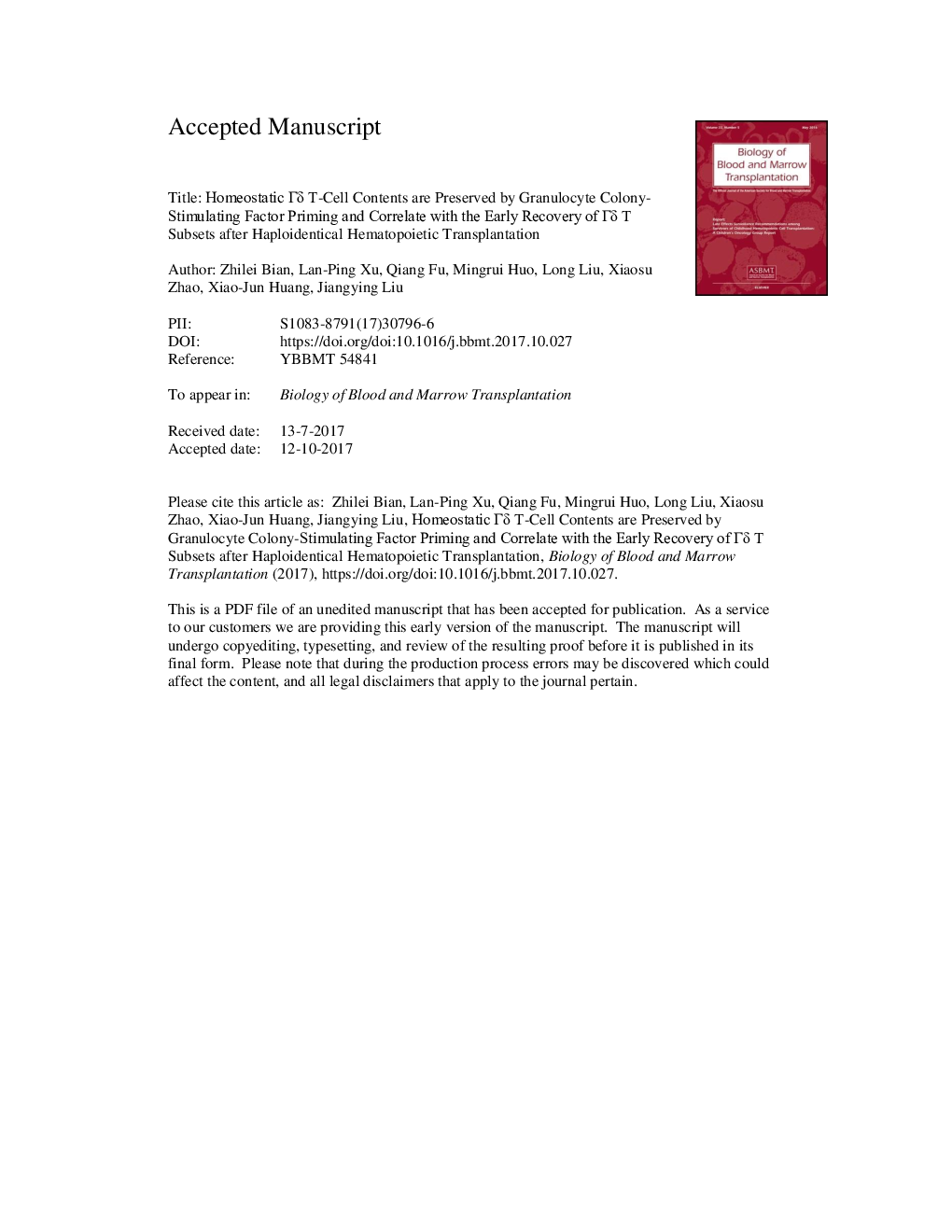| Article ID | Journal | Published Year | Pages | File Type |
|---|---|---|---|---|
| 8430261 | Biology of Blood and Marrow Transplantation | 2018 | 31 Pages |
Abstract
Emerging evidence from graft manipulations and immunotherapeutic treatments has highlighted a favorable effect of γδ T cells in the setting of allogeneic hematopoietic stem cell transplantation (alloHSCT). However, γδ T cell subsets and their distinct features in the allograft have not been characterized. Additionally, whether homeostatic γδ T cell fractions are influenced by treatment with granulocyte colony-stimulating factor (G-CSF) remains elusive. We initially compared the phenotypes of γδ T cell subsets, including CD27+, CD27-, Vδ1+, Vδ2+, Vδ1+CD27+, Vδ1+CD27-, Vδ2+CD27+, and Vδ2+CD27- cells, in the peripheral blood of 20 healthy donors before and after G-CSF mobilization. The effects of G-CSF on the cytokine production capacities of γδ T cell subsets were also detected. Moreover, the correlation between donor homeostatic γδ T cell content and the early recoveries of γδ T cell subgroups after haploidentical HSCT was investigated in 40 pairs of donors and recipients. We found that both the proportions and IFN-γ secretion capacities of peripheral γδ T cell subsets were preserved in G-CSF-primed grafts. Homeostatic Vδ1 and Vδ2 proportions of donors significantly correlated with the early recoveries of Vδ1 and Vδ2 cells after haploidentical HSCT. Interestingly, a higher day 30 Vδ1 concentration was associated with a lower incidence of cytomegalovirus reactivation in recipients. These results not only clarify the preservation of γδ T cell phenotypes and functional features by G-CSF mobilization but also suggest the importance of homeostatic γδ T cell content for immune recovery after alloHSCT.
Keywords
Related Topics
Life Sciences
Biochemistry, Genetics and Molecular Biology
Cancer Research
Authors
Zhilei Bian, Lan-Ping Xu, Qiang Fu, Mingrui Huo, Long Liu, Xiaosu Zhao, Xiao-Jun Huang, Jiangying Liu,
